The WonderBag is a slow-cooker designed to reduce cooking time, fuel use, and carbon emissions. It also lightens the load for women in countries where open-fire cooking and hours of unpaid labor daily falls to them.
TONGAAT, SOUTH AFRICA—
Maita Usai was asleep when the floods came.
“Maita,” her husband Cuthbert whispered, shaking her awake. “There’s water coming into the house.” It was around 11 p.m. on April 12, and the couple had gone to bed to the sound of rain falling thick and fast against their tiled roof.
Presenters on the evening news had warned of the worst flooding in four decades in KwaZulu Natal, the province of lush green rolling hills that hugs South Africa’s eastern Indian Ocean coastline. The rains were being made worse, experts were saying, by climate change, which was turning the weather here more extreme, more mercurial, and more dangerous by the year.
Still, Usai hadn’t expected it to happen like this: water pummeling her house from all sides in the middle of the night. When she looked out her window, she could see the water roaring down the scrabbly hillside above her house, choked with garbage and rocks. At the same time, from the other side of the house, at the bottom of the hill, water was spilling up from a nearby riverbed, as though an enormous tap had been turned on and left unattended. And it was still falling from the sky too, a rain so cacophonous across her roof that she could barely hear Cuthbert’s voice.
Together, they ran out of their room to the living room, where their three boys slept together on a fold-out couch. Water was sliding in through the crack beneath the front door. Usai pulled it open so that her husband could go outside and dig a makeshift moat around the house. “It flooded us like a river,” she says.
She spent the rest of the night scooping knee-high water out of the house with buckets as Cuthbert dug a shallow trench around their property to stop more from getting in. Some of their neighbors went further, drilling holes in the downward-facing side of their houses to allow the water to pour through like a sieve.



For decades, women like Usai, who runs a small daycare in this aging industrial town outside Durban, have been on the frontlines of climate change. Africa is responsible for just 2-3 percent of global emissions, but sea levels are rising, temperatures are climbing, and weather is becoming more extreme in African countries faster than global averages. That is making the lives of some of the world’s most vulnerable people even harder.
But in recent years, the actions of the world’s biggest polluters and women like Usai have been connected by a novel mechanism—a big bean bag.
It’s a cloth bag stuffed with squishy insulation made from recycled insulation from cars and houses, but from afar, it looks like something a giant might use to play hacky sack. Inside this contraption, each morning, Usai places a hot, half-cooked meal she has been preparing for the children at her daycare—a bean stew, a pot of rice, a fish curry. Then she pulls the bag shut and walks away. A few hours later, when she returns the food is ready, having finished cooking in the bag’s insulated padding.
This low-tech slow cooker—which according to the company can slow-cook food for up to eight hours—is called a Wonderbag, and the one Usai uses was bankrolled by a carbon credit—a mechanism by which people and companies can “offset” their own contributions to climate change by paying into projects that help reduce carbon emissions elsewhere.


The Wonderbag, for instance, saves its users—most of them women in Africa—from burning carbon-emitting fuel sources such as electricity, gas, or wood. The company—which has been nominated for the 2022 Food Planet Prize—claims that annually, each unit saves up to 70% of cooking fuel, reduces indoor air pollution by 60% (thereby also health problems caused by smoke and fuel toxins), diverts 1,000 hours of unpaid labor (for example for cooking and gathering firewood and water), saves five large trees from deforestation (by using less wood fuel for fires), up to a ton of carbon emissions per year, and can boost household incomes by $2 per day.
In return, the companies that fund its production can claim to reduce their overall contribution to global emissions—and do a bit of social good too. It is a simple but profound way to show how carbon credits can be used in practice for the people living through climate change’s worst consequences. Companies including the energy giant Sasol, the fast food chain Nando’s, and the French state-run energy utility EDF have purchased offsets from Wonderbag in recent years.
It’s a linkage that the Wonderbag’s founder hopes will have wider implications for food security globally. “If people can’t cook, they can’t eat,” says Sarah Collins, the Wonderbag CEO. “The power is in the hands of these corporations and their consumers.”

The Wonderbag is not a new idea. It’s probable that for as long as people have been cooking, there has been some version of the concept. In fact, cooking “pits”—where food can be buried over smoldering rocks or coals to slowly roast—are often one of the first signs archeologists look for in determining if an area was inhabited by humans. Today, earth ovens remain common in many parts of the world, from the pit barbecues of the American South to the imus used to cook pig and other traditional luau foods in Hawaii.
In nineteenth-century Europe, meanwhile, so-called “hayboxes”—which used hay or straw for insulation—were a common slow cooking method. They later enjoyed renewed popularity during the Second World War as a way to conserve scarce fuel.
Wonderbag’s founder, Sarah Collins, had grown up with something similar on a farm in the South African Midlands. Her grandmother would remove hot pots from the stove and wrap them in cushions and blankets. Hours later, she would return to fully-cooked meals. In the 1970s, another South African outfit had distributed a similar product called the “wonderbox,” which used bags filled with polystyrene chips.
I had started to see how food and fuel were at the root of so many problems. —Sarah Collin, WonderBag CEO
The seed for Collins to develop the Wonderbag version was the rolling power outages that gripped South Africa in the winter of 2008 as the country’s creaking apartheid-era power grid began to crumble. Cooking, it seemed to her, needed to be less reliant on electricity. But the idea also emerged in part from her time working with rural communities living near national parks in southern Africa. For people living on the margins, she knew, even small gains—like having to spend a few dollars less on gas for cooking, or a few fewer hours searching for wood—could make an important difference to their quality of life.
“I had started to see how food and fuel were at the root of so many problems,” she says. And this was particularly true for women, to whom the burden of preparing food usually fell. They were the ones exposed to violence and theft when they went to collect wood. They were the ones who couldn’t go to school or work outside the house when there was cooking to be tended to. They were the ones inhaling fumes from gas and smoke from charcoal as they bent over pots of food. If a better way of cooking could move the needle even a little on those problems, she thought, it was worth throwing herself behind.

“Heat retention cooking was something that needed to be mainstreamed… in the twenty-first century,” Collins says. “It’s so obvious. But everybody wants a button to press, something fancy.”
There was also another small problem. Collins didn’t want to run a charity. But the women to whom she was distributing Wonderbags also couldn’t afford to buy them at market rates. So who was going to bankroll these beanbags?
In the company’s first few years, she scraped together funding from personal sources, corporate sponsorships, and philanthropy. The company also sold Wonderbags at market rates to consumers in the West. But then she began to hear rumblings about the market for carbon credits, which allowed big polluters to offset their damage to the environment by buying various forms of “unused” emissions.
The idea had emerged from the Kyoto Protocol, the 1997 international climate accord implementing the United Nations Framework Convention on Climate Change (UNFCCC), which set up a system for companies with lower emissions to sell so-called “credits”—unused metric tons of carbon—to higher-emitting ones. But it had gradually expanded to include the purchase of other kinds of carbon sinks as well—the term for anything that stores carbon instead of releasing it. Like forests. Or mangroves.
Or perhaps, Collins thought, like a Wonderbag.



When the flood waters receded back in April, Usai counted herself lucky. Her house was still standing. Her family was still alive. She’d seen how the flood waters had torn chunks out of the hillside around her, taking down entire houses. She remembered the screams of those living along the river banks as they stood on their roofs, watching the water rise. The floodwaters had dragged powerlines under, snapped bridges in half, severed sewage pipes.
But even for the lucky ones, life had become that much more difficult. And it wasn’t just the lack of running water. Usai’s garden by the river, where she had grown spinach, corn, sweet potatoes, and onions for the daycare, had been completely destroyed.
Some days, the worry over that lost garden gripped her chest. Food was essential to the work she did at the daycare. She’d trained extensively in early childhood development in her home country of Zimbabwe, and taught it at a teacher’s college in South Africa. She knew that the brains of young children are hungry—quite literally. A five-year-old’s brain uses twice as much glucose as that of an adult.

And for the kids at Breeze, their days were crammed with lessons: numbers, colors, days of the week, what sounds a cat makes, what kinds of animals live on a farm. “I love how easily children accept new knowledge and perspectives,” she says, “as compared to adults who think they know everything when they don’t.”
And no one learns well, she knew, on an empty stomach. So she’d also made it a part of the daycare’s mission to make sure its pupils were well fed.
The math of that, however, threatened to undo her. Each family who sent a child to her daycare paid her 350 rand ($20) a month. In total she brought in around 8000 rand ($467). From that, she had to pay her assistant and herself, buy equipment for her lessons, and feed 25 children.
She had cut food costs every way she could. But at times the task felt nearly impossible. Since February, when Russia invaded Ukraine, food prices had been shooting up in South Africa, as they had around the world. By mid-2022, the price of cooking oil here was up 50 percent from the previous year. Potatoes were up 22 percent.
The garden had been a huge help. And now it was gone.
In fact, one of the few ways Usai had left to cut costs were her two Wonderbags, which she had received during distributions the organization did in her area.
Each day, as the first kids trickled into her daycare and the sun rose in pastel shades of strawberry yogurt over the nearby hills, she began prepping lunch on her small gas stove.
On a recent winter morning, she sloshed a bit of cooking oil into a hot pan and then tossed in a chopped onion. The pan hissed back at her as she added water and rice to another. A few minutes later, she took her half-cooked tinned fish stew off the stove, and quickly placed it inside one of her Wonderbags. She slid the pot of rice into the other.
Usai estimates that the bags save her about 300 rand ($17) a month on gas canisters and electricity.
It isn’t much, but then again, Usai never expected something like the Wonderbag to be a revolution. It was just a tool to smooth out a few of the creases, make life a little lighter, a little easier. After tucking in her pots, she picked up her two Wonderbags and walked the short distance to her daycare down the road.

Women like Usai mostly receive their Wonderbags during “activations,” events at which the company sells the bags for a nominal sum—generally $1 to $3—and teaches owners how to use them for cooking. In South Africa, the company approaches community organizations and asks them to arrange for their members to come to these activation events. Collins says she prefers to sell the bags at a below-market rate, rather than give them away, so that owners literally buy into the project, rather than being passive recipients of aid. To date, about 90 percent of the three million Wonderbags distributed have been handed out this way, with the remainder being sold online to consumers in South Africa and the West for prices between $30 and $75.
The Wonderbags last around ten years, they claim, although the company replaces old ones and recycles the insulation where possible. The Wonderbag has so far been sold and distributed internationally, including South Africa, Kenya, Rwanda, Syrian refugee camps in Jordan, the United Kingdom, the United States, Australia, New Zealand, in continental Europe, Reunion Spain, Sweden, and Switzerland.
But in order to subsidize the bags sold below market rates, Collins devised a system for estimating the Wonderbag’s carbon savings.
She consulted with carbon offset consultants, who estimated that for each Wonderbag in use, between .5 and one metric ton of carbon was being saved annually, depending on the fuel source it replaced. In 2011, Wonderbag registered its first two carbon offset projects—in Rwanda and South Africa. That meant that companies could buy carbon credits from Wonderbag, and the money would be used to manufacture and distribute them to women who otherwise could not afford to purchase one. Beneficiaries had to agree to provide their contact information so that auditors could follow up to make sure the bags were being used as advertised.

For Collins, the model was nearly perfect, because it sidestepped the need for donor funding and connected her project to the people most responsible for climate change, which was tearing through the lives of the women to whom she distributed Wonderbags.
She saw it in refugee settlements in east Africa where the Red Cross distributed Wonderbags to displaced people who had fled natural disaster after natural disaster, and in the rural South African communities where women had to walk farther and farther to find kindling for their fires. It made sense, she reasoned, that these women should get something back.
But almost as soon as Wonderbag began to fund itself with carbon credits purchased by Microsoft, the global carbon credit market collapsed in 2012, and the company was back to square one. It spent the next several years bouncing between partnerships with companies such as Unilever and Pfizer, and work with humanitarian organizations such as the Red Cross.

Then, in 2019, South African lawmakers signed the carbon tax act, which allowed companies to buy carbon credits to offset some of their taxable emissions. Overnight, the carbon market in the country rebounded. By October 2020, demand was three times supply.
And many of those companies—from the oil company Sasol to the fast food chain Nando’s—were suddenly knocking at Wonderbag’s door. “These companies basically told us they will take as many carbon credits as we are capable of giving them,” Collins said.
Today, the company sells between 200,000 and 250,000 tons of carbon annually. Some experts question the utility of these kinds of offsets, given the scale on which major polluters are contributing to planetary warming. But for companies like Wonderbag, they have been a lifeline—suddenly, its problem isn’t not having enough funding. It’s finding ways to expand quickly enough to meet the new demand.



At the end of a long corridor in a rundown shopping center near Tongaat’s downtown, a burnt-out neon sign advertises a nightclub called The Cellar.
But inside, instead of a bar, a dozen women are bent over sewing machines, stitching together Wonderbags. The walls around them are still a dark, lacquered wood that evokes long nights of drinking and dancing. But pasted to its walls are cheery reminders of The Cellar’s new identity. Company Rules, reads one. Arrive early. Respect each other. No Dating in the Factory. Love your Work. Reach your Target.
This operation is run by Gertrude Ndlovu, a former seamstress at the company’s main factory who struck out on her own in early 2021. On a recent morning, she sat hunched over one of her machines, sewing seams into a Wonderbag as she took calls on a portable headset.
Ndlovu’s factory is one of six small factories to which Wonderbag now contracts across South Africa, allowing the company to step up production while also helping kick-start small businesses.

When the floods came, the waters didn’t reach the factory but washed out roads all over the city, keeping most of Ndlovu’s 28 workers trapped at home for more than two weeks. She’s still paying back the $1400 rent she owes from that month, when she says she made almost no money.
And after the floods came load-shedding, South Africa’s euphemism for the rolling blackouts that have gripped the country this winter as its aging power grid inches closer to collapse. Some days, when the power goes out, Ndlovu simply sends her workers home. On others, they sit in the dark and wait.
“What else can we do?” she says. “Hunger is with us now. People are suffering. People need to make their income. What can we do but try to work?”



In the middle of Tongaat’s rumpled downtown stands a massive, empty socket in the ground. Until a year ago, this was the site of one of the town’s largest grocery stores, a chain store called Shoprite. Like in many parts of South Africa, grocery stores were one of the first things looted here when the riots began last July.
As images circled the country of people fleeing grocery stores with huge loads of staple foods—giant sacks of rice and maize meal, tins of beans, trays of milk cartons—it was hard not to read a certain symbolism. When given the chance to steal anything they wanted, many people here chose food. South Africa, the world’s most unequal country, is a place of aching extremes, where 6.5 million people are “food insecure.”
On weekends, Usai often looks out her window and sees the kids from her daycare wandering by, playing in the streets. She knows on those days, many of them might eat one meal a day, “or maybe just a packet of chips,” she says.

She’s trying to teach them to feel about food the way she did growing up in a small town outside Harare, Zimbabwe, when her mother rose before anyone else in the family to make sure her six children had something hot to eat when they woke up. It was never anything fancy—a bit of porridge, some plain rice. But the message to Usai and her siblings was clear: you are loved. “She told us, a kid who isn’t fed doesn’t excel in school,” she says.
Lately, she’s been teaching a lesson at the daycare about trees.
“I tell them oxygen is a gas that comes from trees,” she says.
“I tell them we get a lot from those trees: air, fruit, shade, wood for building.”
“I tell them they have to protect the trees.”
And when the lesson is finished, she gathers the kids around her, and they repeat back a prayer.
“Before I eat my food, I like to stop and say, thank you Lord for my food today,” they all chant. “Amen!”
Then the kids gather around her in a knot, holding empty bowls and tupperwares, as she opens her two Wonderbags. Steam billows out. She dishes out a serving for each of them, and together, they eat.
Any sustainable food game-changers on your radar? Nominate them for the Food Planet Prize.
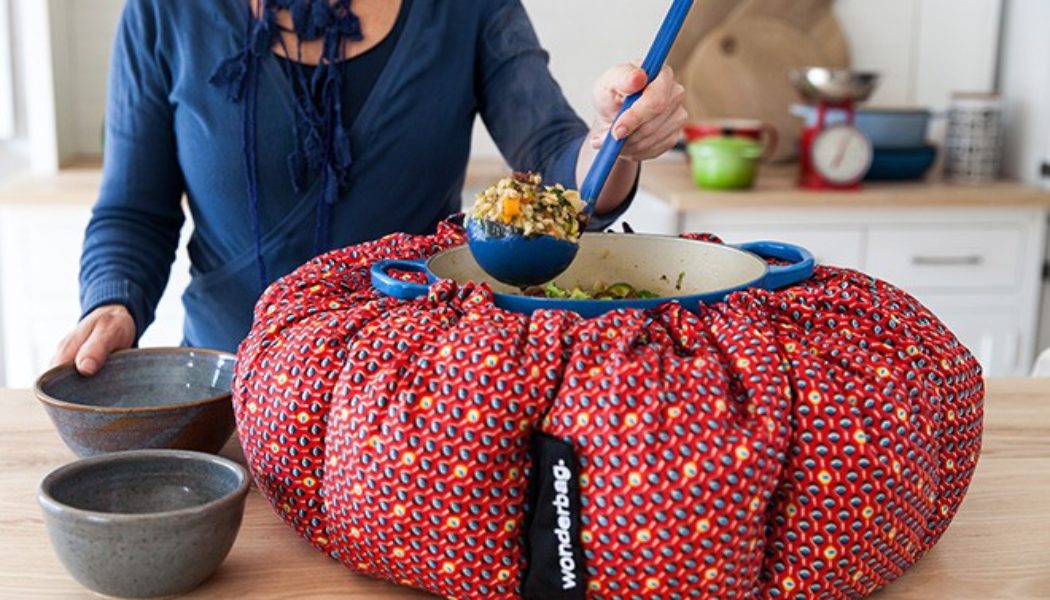

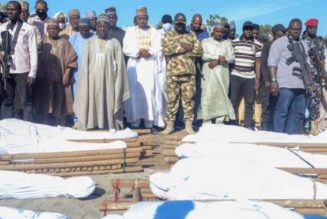
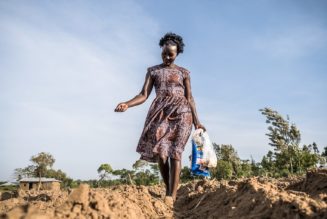
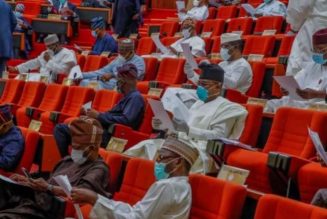
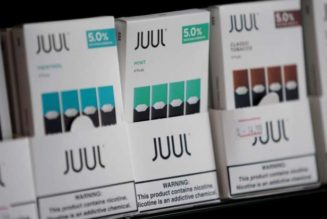
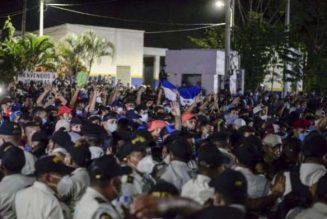

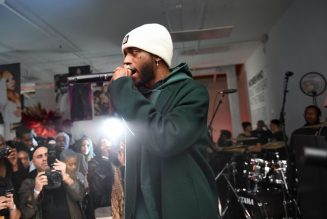
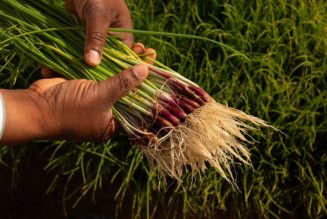

Tagged: food